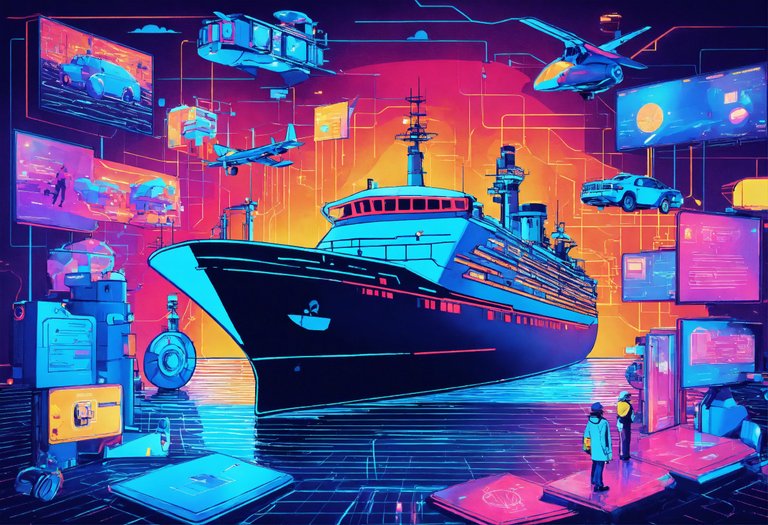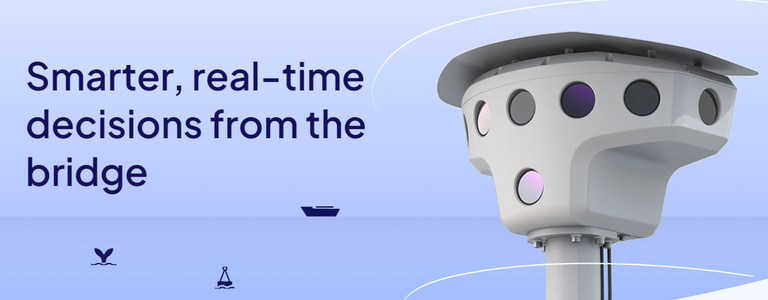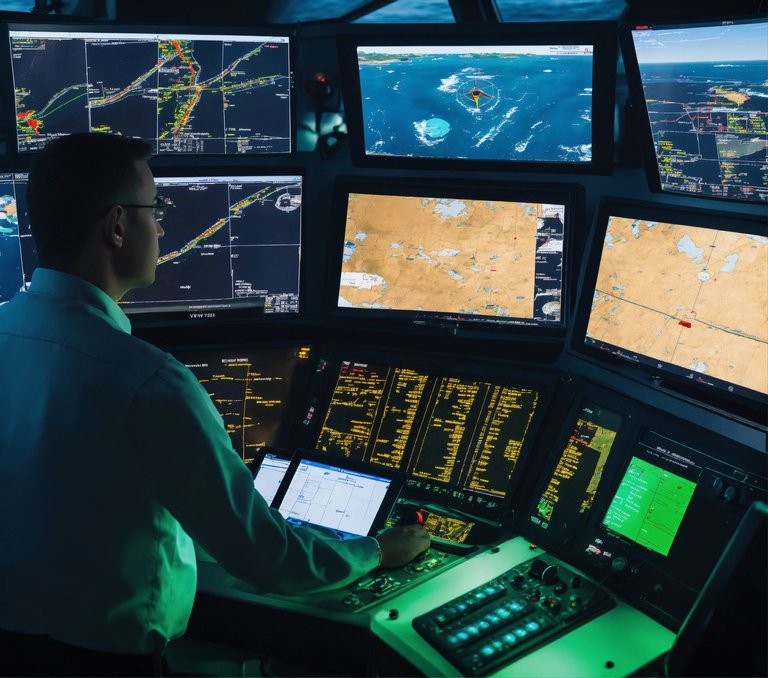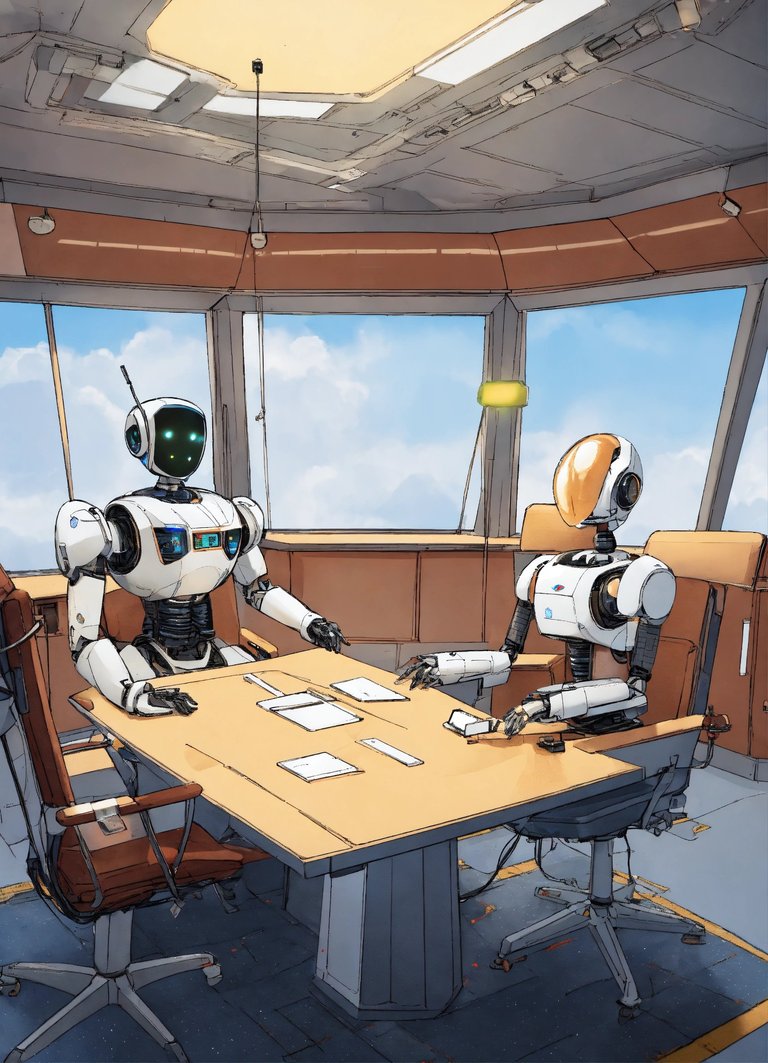
Hace pocos días la empresa Orca AI recientemente lanzó al mercado la última versión de SeaPod, el asistente automático de navegación que utiliza la visión por ordenador y el aprendizaje automático con el fin de aportar ayuda a la gestión de operaciones de navegación en zonas de alto tráfico marítimo.
SeaPod no es más que una unidad de vigilancia digital instalada en el sobrepuente del buque y el cual dentro del puente de mando tiene una pantalla bastante similar a la de la carta electrónica y que muestra en tiempo real los diferentes blancos ploteados.
A few days ago, Orca AI recently launched the latest version of SeaPod, the automatic navigation assistant that uses computer vision and machine learning to assist in the management of navigation operations in areas of high maritime traffic. SeaPod is nothing more than a digital surveillance unit installed on the vessel's monkey island and which, inside the bridge, has an electronic chart-like display that shows in real time the different plotted targets.
El equipo básicamente está diseñado para dar soporte al equipo del puente en sus labores de guardia durante la navegación detectando, rastreando y priorizando objetivos, independientemente de la distancia. El sistema se caracteriza por utilizar inteligencia artificial para mejorar continuamente con el tiempo y de esa manera aumentar los niveles de seguridad y eficacia operativa.
Dentro de las especificaciones técnicas mas relevantes caben destacar las siguientes:
- La unidad tiene una masa de 10 kg
- Cinco (5) cámaras de visión diurna
- Tres (3) cámaras de visión térmica
- Integración con los datos del AIS y ARPA
- Puede funcionar a temperaturas comprendidas entre (-20 a +40) °C
- Puede detectar objetos a una distancia de hasta cuatro millas náuticas (4MN) en todas las condiciones meteorológicas
Realmente la inteligencia artificial ha sido una tecnología que en estos últimos meses ha tenido un auge impresionante, sobre todo por lo rápido que ha llegado a todas las industrias. Mas allá de pensar en que sea una amenaza para el empleo, es esa herramienta que debemos adoptar cuanto antes y aprender a utilizarla en pro de optimizar y mejorar las actividades de rutina.
The equipment is basically designed to support the bridge team in their watchkeeping duties during navigation by detecting, tracking and prioritizing targets, regardless of distance. The system is characterized by the use of artificial intelligence to continuously improve over time and thus increase security levels and operational efficiency. Among the most relevant technical specifications are the following:
- The unit has a mass of 10 kg
- Five (5) day vision cameras
- Three (3) thermal vision cameras
- Integration with AIS and ARPA data
- Can operate in temperatures ranging from (-20 to +40) °C
- Can detect objects up to four nautical miles (4MN) away in all weather conditions
Artificial intelligence has been a technology that in recent months has had an impressive boom, especially for how quickly it has reached all industries. Beyond thinking that it is a threat to employment, it is that tool that we must adopt as soon as possible and learn to use it to optimize and improve routine activities.

Desde mi experiencia, puedo comentar que una guardia de navegación conlleva una gran responsabilidad por parte del personal que se encuentra en el puente de navegación de un buque independientemente del tipo que sea.
En una guardia de navegación de nivel 1 (digamos de la más normal y la cual “no representa atención especial o peligro”) esta un oficial de guardia y un marino (timonel), ellos son los responsables de la vigilia durante 4 horas, deben estar atentos al tráfico, condiciones meteorológicas, comunicaciones por radio, todo esto a través del monitoreo constante de los diferentes equipos.
Tener un SeaPod como asistente, indiscutiblemente ayudaría muchísimo a optimizar en primera instancia la gestión de la navegación en zonas de alto tráfico (El estrecho de Malacca, Singapur, Mar de China, Estrecho de Gibraltar, por mencionar solo algunas zonas).
From my experience, I can comment that a navigational watch carries a great responsibility on the part of the personnel on the navigation bridge of a ship regardless of its type. In a level 1 navigational watch (let's say the most normal and which "does not represent special attention or danger") there is a watch officer and a sailor (helmsman), they are responsible for the watch during 4 hours, they must be aware of traffic, weather conditions, radio communications, all this through constant monitoring of the different equipment.
Having a SeaPod as an assistant would undoubtedly help a lot to optimize navigation management in high traffic areas in the first instance (Strait of Malacca, Singapore, China Sea, Strait of Gibraltar, to mention just a few areas).

Y quizás surja la pregunta ¿Cuál es el asombro por esta unidad? Y es que si bien es cierto hoy día no se navega como lo hacia el Capitán Jack Sparrow y tenemos equipos como radares, AIS, ARPA, ECDIS y hasta el BNWAS (alarma de hombre muerto en el puente) ¿que lo hace diferente?
A diferencia de los equipos mencionados, que son equipos literalmente receptivos de información, este se encuentra en constante aprendizaje con situaciones y datos reales que van a permitir surjan sugerencias de acción por parte del equipo que es importante señalar, al final es el humano quien toma la decisión, sin embargo, mientras es situaciones difíciles se piensa y se le hace llamado al Capitán, se puede tomar decisiones con mas antelación.
Para finalizar, espero en un futuro cercano poder interactuar con un SeaPod y vivir la experiencia de tener casi una navegación autónoma. Los buques no tripulados además de los sistemas de propulsión con combustibles verdes son el próximo paso.
And perhaps the question arises: What is the wonder about this unit? It is true that today we do not sail like Captain Jack Sparrow and we have equipment such as radars, AIS, ARPA, ECDIS and even the BNWAS (dead man on bridge alarm), what makes it different?
Unlike the aforementioned teams, which are literally receptive to information, this one is constantly learning with real situations and data that will allow suggestions for action to arise from the team, which is important to note, in the end it is the human who makes the decision, however, while in difficult situations we think and call the Captain, we can make decisions more in advance.
To conclude, I hope in the near future to be able to interact with a SeaPod and live the experience of having almost autonomous navigation. Unmanned vessels as well as green fuel propulsion systems are the next step.

Translation: DeepL
Imágenes generadas por la IA Lexica